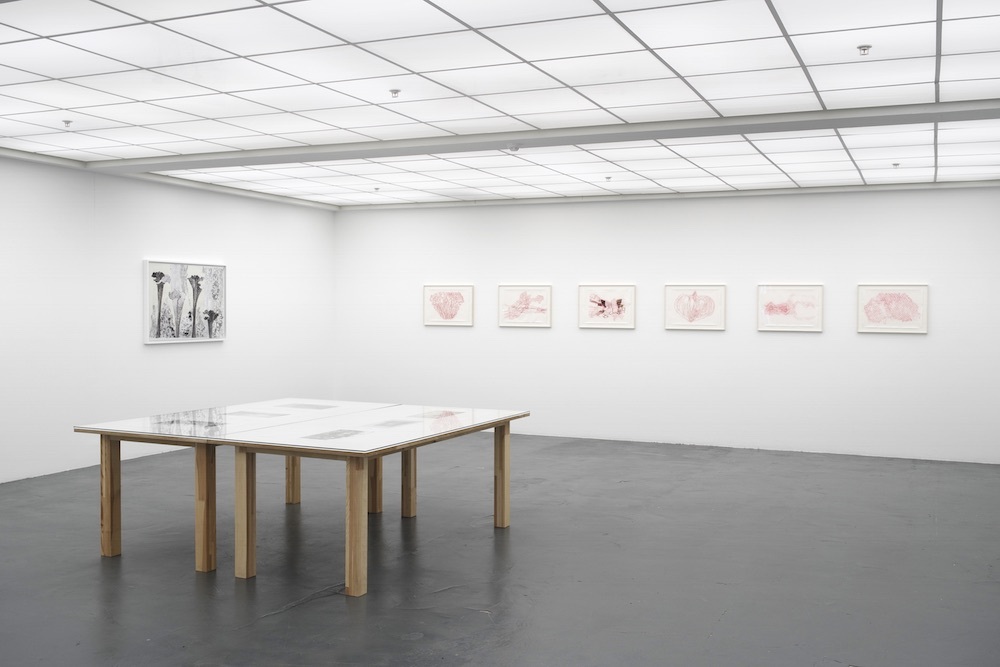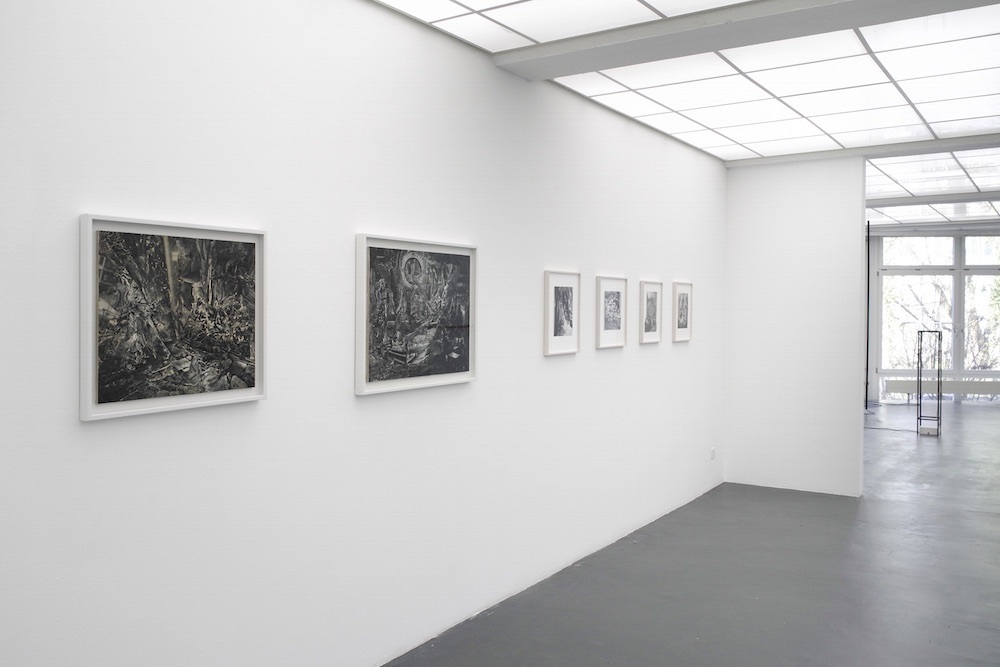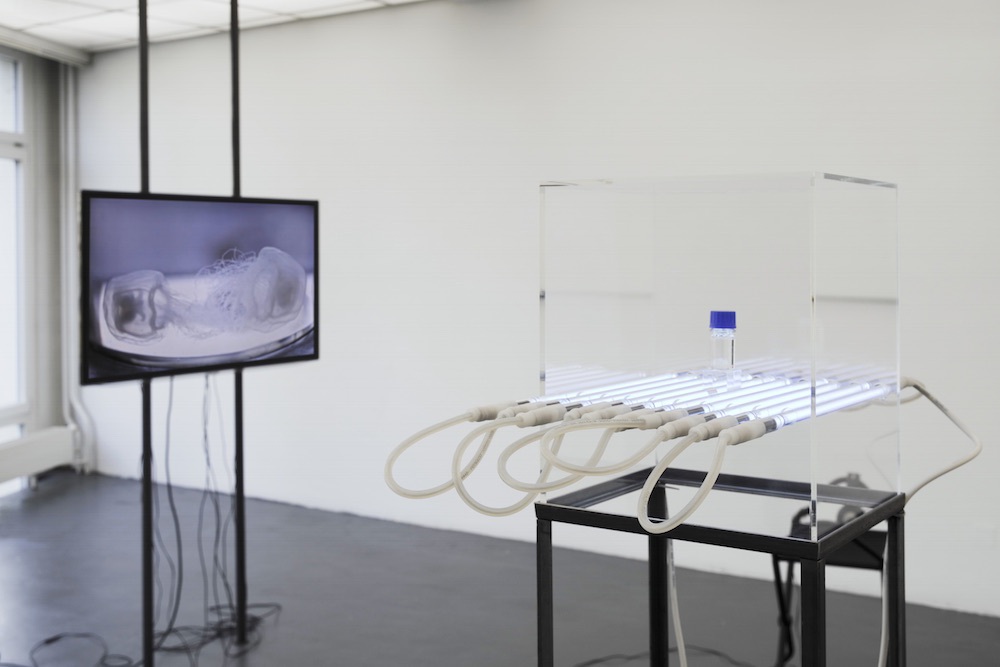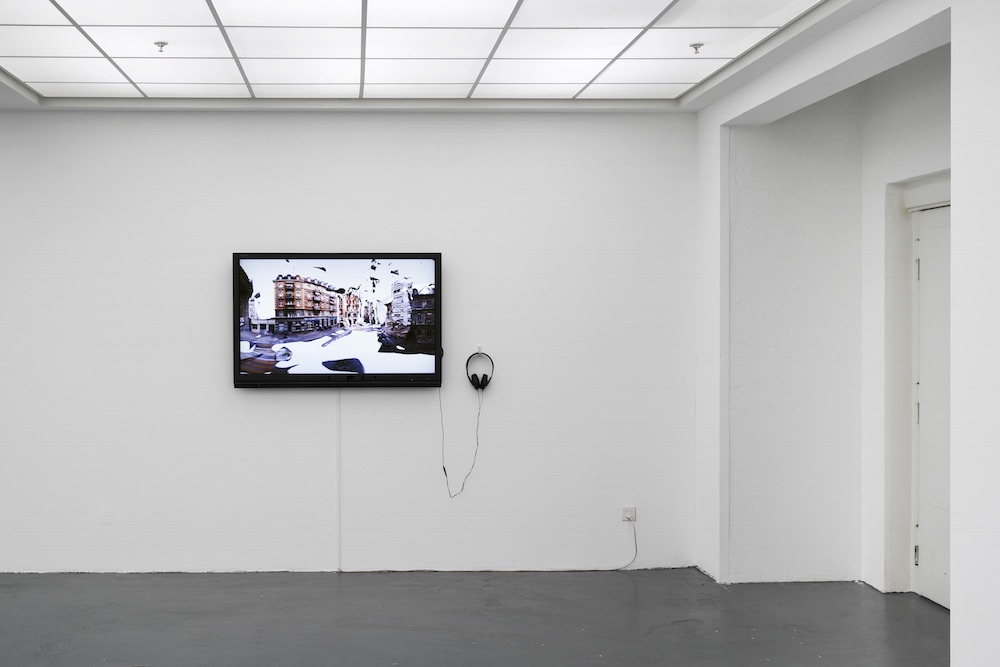Purchased!
The Canton Basel-Landschaft’s new acquisitions
16.3. —
2.4.2018
Having works purchased — whether it is by private or public collections — is an important means of sustaining many artists’ work. Sometimes it means that material can be sourced for the work to come, or the studio rent paid, so that the artist can concentrate on continuing and developing their own work. Having works purchased also, however, brings important recognition and confirmation of an artistic practice.
Now, in collaboration with kulturelles.bl, the Kunsthaus Baselland shows recent studio purchases by the Canton Basel-Landschaft as well as a selection of acquisitions for the moving image collection dotMov.bl in the Kabinett galleries. The complete 2017 studio purchases from artists Sabine Hertig and Krassimira Drenska will be shown, complemented within the exhibition by further works. The dotMov.bl collection is a primarily web-based collection which can be seen in full in the media libraries at the Kunsthalle Palazzo in Liestal and the Kunsthaus Baselland in Muttenz. Of these purchases, we are showing, with the artists’ cooperation, the work Zürich 2.0, 2016, from Dirk Koy and the work Perpetual Operator, 2016, from Dominique Koch, which is conceived as an installation and has been adapted to the Kunsthaus space.
Additionally purchased works, such as Earth (A Space Odyssey/Oddity), 2016, by Esther Hunziker, whose work can currently be seen in a major solo exhibition at the Kunsthaus Baselland, Stefan Karrer’s Cool clouds that look like they should be spelling something, but they don’t, 2016, Rahel Sarasin’s Untitled, 2015, Jannik Giger’s Intime Skizzen, 2016/17, and Esther Ernst’s Short Attractions, 2015, can soon be seen in full at both media libraries mentioned above. The work Cockaigne (Schlaraffenland), 2014, by Gerda Steiner & Jörg Lenzlinger can be seen from now until the 2nd April within the exhibition Places of Longing at the Kunsthaus Baselland.
During the group exhibition Purchased the solo exhibitions by Esther Hunziker and the group exhibition Sehnsuchtsorte / Places of longing were also on display.

Availing of many different media, the artist Krassimira Drenska (b. 1947, Sofia, Bulgaria), who lives and works in Reinhach, has developed several work series that all use an organic formal language. The series Summer Stills, which was created over several years, operates in a poetic force field between living and dead matter, light and shade, and vitality and melancholy. Aligning with the artistic tradition of the still life, Drenska creates seemingly accidental arrangements through careful staging, capturing in these the gentle ephemerality of a moment. A decisive element is the quality of summer light which the artist captures on her journeys through Brazil, Mexico and New Zealand. Through a pigment-transfer print process which she herself developed, photographs are transferred manually onto deckle-edged paper, through which the works gain their dreamy, painterly transparency. The botanical vocabulary is found again in two large-format monochrome photographs as well as in the Scarlatas series of abstract watercolours the basis of which are filigree red line drawings. Photographs, some of them monumental in size, also graphically communicate Drenska’s poetic view of nature.
Text by Carole Ackermann

The multifaceted work of the Basel-based artist Sabine Hertig has developed over more than ten years. She continually challenges the medium of analogue collage and related methods of dealing with the images around us, questioning the medium itself in the process. Hertig takes smaller and larger clippings from an immense archive of magazines, newspapers and images from the internet too in order to re-combine them. A new whole is formed, which could be from just two clippings, or a multitude. The astonishing effect that each of her works demonstrates — be it small-scale or wall-sized — is due to her precise selection and the subsequent fresh combination of the given motifs. Skilfully the artist pays attention to the formal similarities of the parts coming together. The mood, how light falls and the content within each clipping play key parts in her selection process, whether or not Hertig is working in black and white only or with coloured elements. According to the artist, collage is not only a technique but a tool for thinking clearly about a world of continual information assemblage.
Text by Ines Goldbach

The spatial arrangement of the works by artist Dominique Koch (b.1983) is enigmatic. The work’s title, Perpetual Operator, leads us along the right track. Fine sounds in the space and the appearance of the jellyfish, an example of the species Turritopsis dohrnii, which are known for their longevity, might summon the idea that there is more at stake for the artist, who lives in Basel and Paris, than just an aesthetic arrangement. The artist’s discussions with the sociologist Maurizio Lazzarato and the writer, philosopher and activist Franco ‘Bifo’ Berardi accompany the film’s narrative, while a vocal interpretation of the jellyfish’s DNA code by the musician and poet Seijiro Murayama is emitted from the small openings, pipes and cables on the gallery walls. With this the artist tells us about ‘what is beyond art’ and creates fertile ground for a presentation of the jellyfish, whose DNA can regenerate up to 14 times, seemingly defying a finite nature. Scientific research, poetry and literature, assumptions and certainties are the materials with which Dominique Koch develops and realises her work series. Linking what is beyond with what is within, not just spatially but conceptually too, is a key part of this.
Text by Ines Goldbach

In the video work Zürich 2.0 by Dirk Koy (b. 1977), reality and its digital, manipulated reproduction are in continual exchange. A 360-degree animation with music by Niki Reiser opens up a stunning, partially fantastical, partly seemingly real journey through the digitally animated and manipulated city of Zurich to the viewer. The artist, who works in Münchenstein and lives in Allschwil, used the photogrammetry technique for this. Individual parts of the city are created as 3D scans and relocated into a three-dimensional virtual world. The viewer seems to enter ever deeper into the city — a city that is experienced not as a built statement but instead in a painterly, mutable and even transient manner. The sound alone draws the viewer to look and marvel. It is no accident that mental links can be made between the works of Sabine Hertig and Dirk Key, as both have studios in Basel’s Dreispitz and are in continual dialogue. In addition, Koy is director of an office for motion design and experimental film-making and teaches Time Based Media at the Institut Visuelle Kommunikation of the HGK Basel.
Text by Ines Tondar